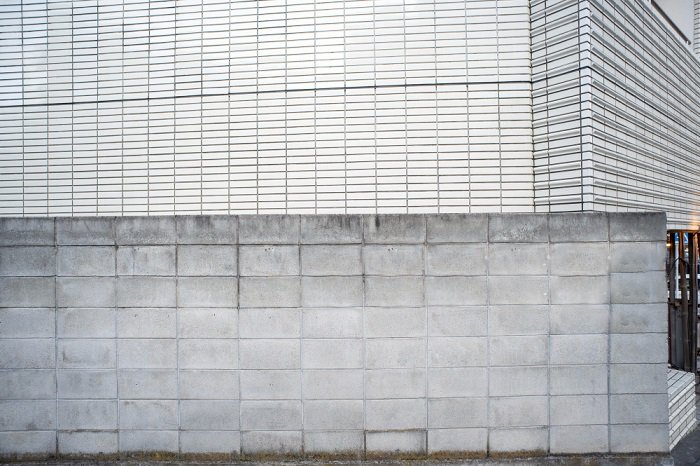Concrete sleeper retaining walls are a popular choice for landscaping and construction projects. They offer durability, aesthetic appeal, and functionality, making them an ideal solution for retaining soil, preventing erosion, and creating leveled areas in gardens or construction sites. This guide provides an in-depth look at concrete sleeper retaining walls, including their benefits, types, installation process, maintenance tips, and creative design ideas.
Concrete sleeper retaining walls are structures built to hold back soil and prevent erosion. They are made from precast concrete sleepers, which are durable and capable of withstanding significant pressure. These walls are commonly used in residential and commercial landscaping, road construction, and other civil engineering projects.
Types of Concrete Sleeper Retaining Walls
Standard Concrete Sleepers
- Description: Basic, solid concrete sleepers with no additional textures or colors.
- Pros: Cost-effective, strong, and durable.
- Cons: Plain appearance may not suit all aesthetic preferences.
Textured Concrete Sleepers
- Description: Sleepers with various textures, such as wood grain, stone, or brick patterns.
- Pros: Provides a more natural and attractive look.
- Cons: Slightly more expensive than standard sleepers.
Colored Concrete Sleepers
- Description: Sleepers available in different colors to match or complement the surrounding landscape.
- Pros: Enhances the visual appeal of the retaining wall.
- Cons: Color may fade over time if not properly maintained.
Reinforced Concrete Sleepers
- Description: Sleepers reinforced with steel bars or mesh for added strength.
- Pros: Ideal for retaining higher loads and taller walls.
- Cons: More expensive and heavier, requiring more effort during installation.
Benefits of Concrete Sleeper Retaining Walls
Durability
- Long-lasting: Concrete sleepers are resistant to rot, pests, and weather conditions, ensuring a long lifespan.
- Strength: Capable of supporting heavy loads and withstanding significant pressure from retained soil.
Aesthetic Appeal
- Variety of Designs: Available in various textures, colors, and finishes to complement different landscaping styles.
- Clean Lines: Provides a neat and modern look to any outdoor space.
Versatility
- Multiple Applications: Suitable for garden beds, terraces, steps, and other landscaping features.
- Customizable: Can be tailored to fit specific design requirements and site conditions.
Low Maintenance
- Minimal Upkeep: Requires little maintenance compared to other materials like timber or natural stone.
- Easy Cleaning: Can be easily cleaned with water and mild detergent.
Eco-Friendly
- Recyclable: Concrete is recyclable, reducing environmental impact.
- Sustainable: Often made from recycled materials, contributing to sustainability efforts.
Choosing the Right Concrete Sleeper Retaining Wall
Purpose and Function
- Soil Retention: Determine the amount of soil the wall needs to retain and select sleepers that can handle the load.
- Erosion Control: Consider the slope and drainage requirements to prevent erosion and water damage.
Aesthetic Considerations
- Design Style: Choose sleepers that match the overall design style of your landscape or property.
- Color and Texture: Select colors and textures that complement the surrounding environment and enhance visual appeal.
Durability and Strength
- Material Quality: Ensure the sleepers are made from high-quality concrete for maximum durability.
- Reinforcement: Consider reinforced sleepers for added strength, especially for taller walls or heavy loads.
Cost and Budget
- Initial Cost: Compare the cost of different types of sleepers and choose the best option within your budget.
- Long-term Value: Consider the longevity and maintenance costs to determine the overall value of the investment.
5. Installation of Concrete Sleeper Retaining Walls
Planning and Design
- Site Assessment: Evaluate the site conditions, including soil type, slope, and drainage.
- Design Layout: Plan the layout and dimensions of the retaining wall, including height, length, and any curves or steps.
- Permits and Regulations: Check local building codes and obtain necessary permits before starting the installation.
Tools and Materials Needed
- Concrete sleepers
- Steel reinforcement (if required)
- Concrete mix
- Gravel or crushed stone
- Drainage pipe
- Shovel and wheelbarrow
- Level and measuring tape
- Safety equipment (gloves, goggles, etc.)
- Power tools (drill, saw, etc.)
Step-by-Step Installation Guide
- Prepare the Site: Clear the area of debris, vegetation, and rocks. Level the ground and mark the layout of the wall with stakes and string.
- Excavate the Trench: Dig a trench for the foundation, ensuring it is wide enough for the sleepers and deep enough to accommodate the base material.
- Install the Base: Add a layer of gravel or crushed stone to the bottom of the trench and compact it to create a stable foundation.
- Set the First Layer: Place the first layer of concrete sleepers in the trench, ensuring they are level and aligned correctly. This layer serves as the base and must be perfectly level.
- Add Reinforcement: If using reinforced sleepers, install the steel bars or mesh as required. Ensure the reinforcement is properly positioned within the sleepers.
- Build the Wall: Continue stacking the sleepers, ensuring each layer is level and aligned. Use concrete adhesive or mortar to secure the sleepers if necessary.
- Install Drainage: Place a drainage pipe behind the wall to prevent water buildup. Cover the pipe with gravel or crushed stone to facilitate drainage.
- Backfill the Wall: Backfill the area behind the wall with soil, compacting it in layers to prevent settling. Ensure the backfill material is properly graded for drainage.
- Finish the Wall: Add the final touches, such as capping the top of the wall with concrete caps or pavers for a polished look.
Maintenance of Concrete Sleeper Retaining Walls
Routine Inspections
- Regular Checks: Inspect the retaining wall periodically for signs of damage, such as cracks, shifting, or erosion.
- Drainage: Ensure the drainage system is functioning correctly and clear any blockages to prevent water buildup.
Cleaning Tips
- Surface Cleaning: Clean the surface of the concrete sleepers with water and a mild detergent to remove dirt and stains.
- Power Washing: Use a power washer for deeper cleaning, but avoid using high pressure that could damage the concrete.
Repair and Replacement
- Minor Repairs: Repair small cracks or chips with concrete patching material. Ensure the repair blends seamlessly with the rest of the wall.
- Replacement: Replace damaged sleepers if necessary, ensuring the new sleepers match the existing wall in terms of size, color, and texture.
Creative Design Ideas for Concrete Sleeper Retaining Walls
Garden Beds and Planters
- Raised Garden Beds: Use concrete sleepers to create raised garden beds, providing better drainage and easier access for planting and maintenance.
- Integrated Planters: Design the retaining wall with integrated planters to add greenery and enhance the visual appeal.
Terraced Gardens
- Multi-Level Design: Create a terraced garden with multiple levels, using concrete sleepers to retain each tier. This is especially useful for sloped landscapes.
- Plant Variety: Use the different levels to plant a variety of flowers, shrubs, and vegetables, adding depth and interest to the garden.
Seating Areas
- Built-in Benches: Incorporate built-in benches into the retaining wall design, providing functional seating areas within the landscape.
- Outdoor Lounges: Create an outdoor lounge area with concrete sleeper retaining walls, complete with seating, planters, and decorative elements.
Outdoor Features
- Water Features: Integrate water features, such as fountains or ponds, into the retaining wall design for a tranquil and visually striking element.
- Lighting: Add outdoor lighting to the retaining wall to highlight its structure and enhance safety and ambiance at night.
FAQs on Concrete Sleeper Retaining Walls
Concrete sleepers are made from precast concrete, often reinforced with steel bars or mesh for added strength.
Concrete sleeper retaining walls can last for several decades, depending on the quality of the materials and the installation process.
Yes, concrete sleepers require minimal maintenance, including regular inspections, cleaning, and occasional repairs.
Yes, concrete sleepers can be painted or stained to match the surrounding landscape. Use high-quality, weather-resistant paint or stain for the best results.
The height of a concrete sleeper retaining wall depends on various factors, including the type of sleepers used, soil conditions, and local building codes. Consult a professional engineer for walls over 1 meter (3 feet) high.
Concrete sleepers are eco-friendly as they are often made from recycled materials and are recyclable themselves. They also contribute to sustainable landscaping practices.
Yes, many homeowners can install a concrete sleeper retaining wall themselves, especially for smaller projects. However, for larger or more complex installations, hiring a professional is recommended.
Common problems include cracking, shifting, and drainage issues. Proper installation and maintenance can help prevent these issues.
Install a drainage pipe behind the wall and cover it with gravel or crushed stone. Ensure the backfill material is properly graded to facilitate drainage.
The cost varies depending on the type of sleepers used, the height and length of the wall, and labor costs. On average, expect to pay between $100 and $300 per linear meter.
Conclusion
Concrete sleeper retaining walls offer a durable, versatile, and aesthetically pleasing solution for a variety of landscaping and construction needs. With proper planning, installation, and maintenance, these walls can enhance the functionality and beauty of any outdoor space. Whether you’re looking to retain soil, prevent erosion, or create stunning garden features, concrete sleeper retaining walls are an excellent choice for both residenial and commercial projects.






